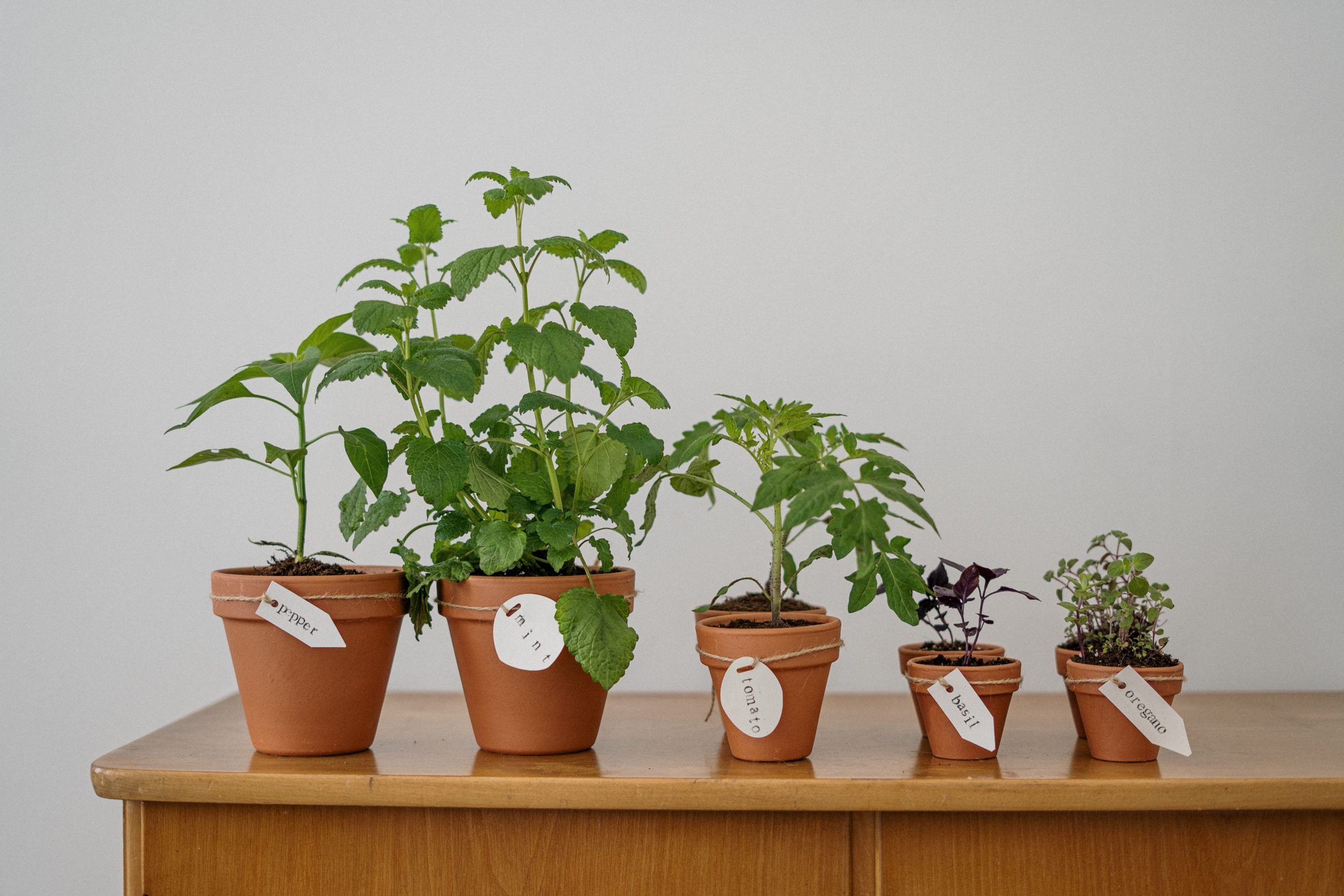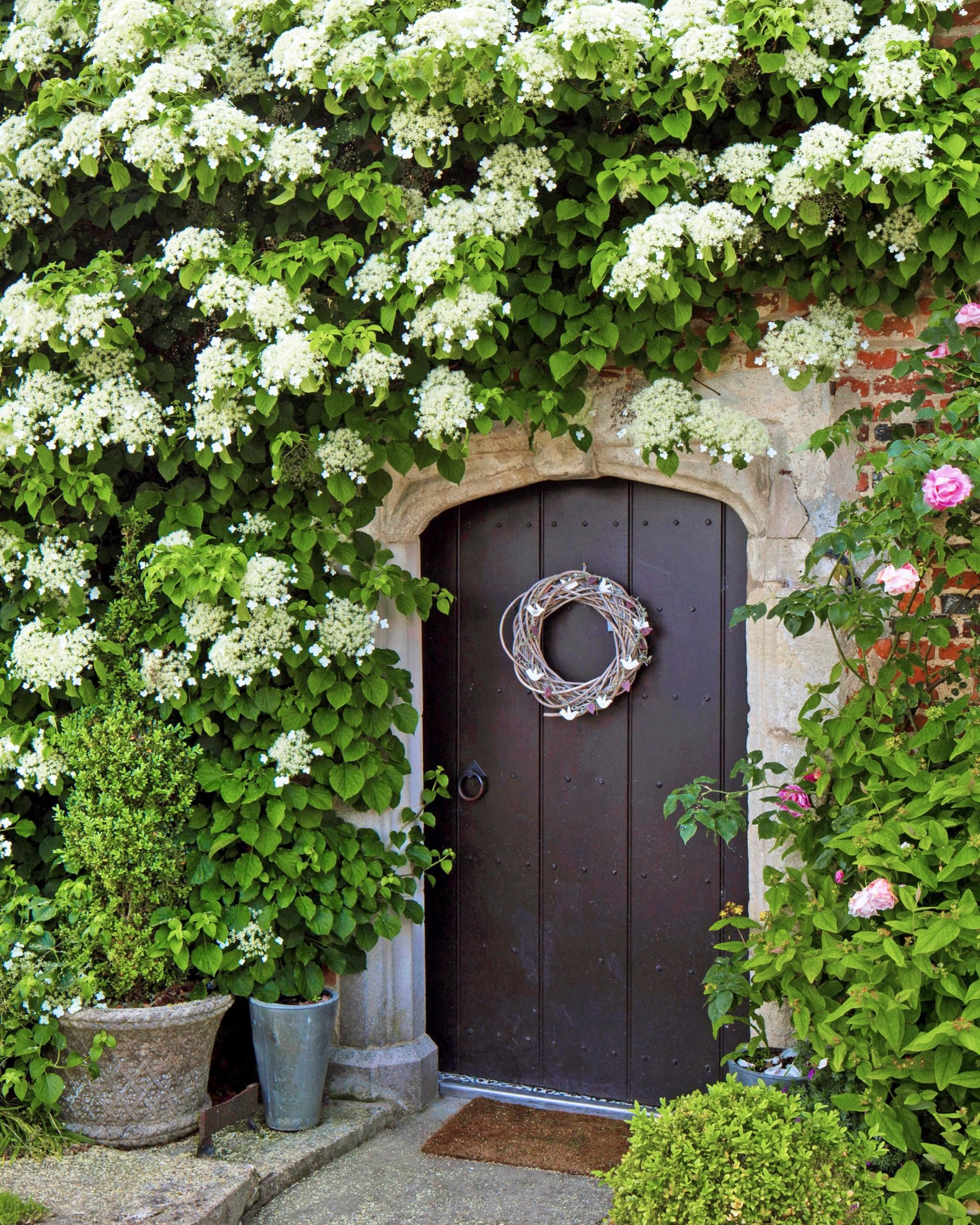16 Autumn Flowering Bulbs to Brighten Up Your Garden
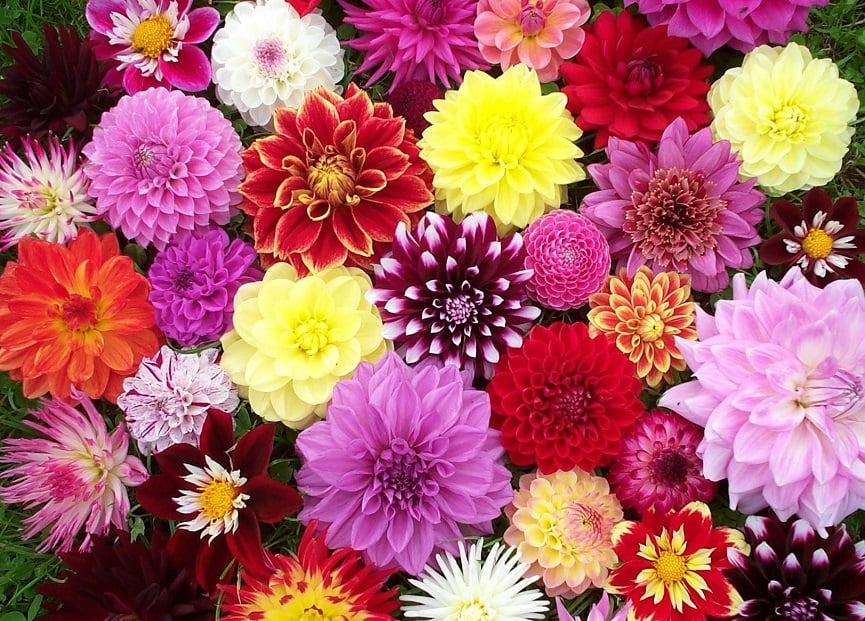
Table of Contents
Autumns are an underappreciated season. With the arrival of autumn, the spring flowers die down, and the trees shed their leaves, so the landscape can appear a bit barren. One misses the colourful display of spring flowers. But you don’t have to bear farewell to flowers just because autumn has arrived.
Autumns have their very own spectacular varieties of flowers that can replenish your fall garden, from the bright yellow of winter daffodils to the pink autumn flowering bulbs of Hesperantha coccinea, autumn flowers that come in a range of colours.
This article lists 16 autumn flowering bulbs that will help to add colour and character to your autumn garden. Let’s Begin!
1. Sternbergia
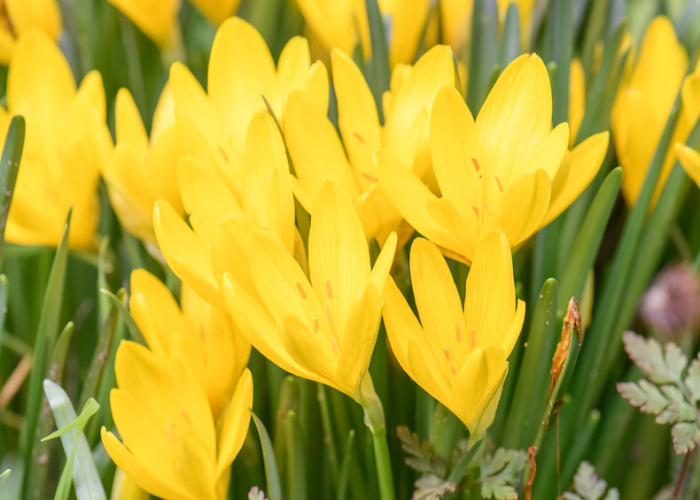
Also referred to as the autumn daffodil or winter daffodil, Sternbergia is a native of the Mediterranean; they prefer well-drained soil and full sun. Sternbergias can be planted in pots or can be spread out in the garden; they are fairly sturdy.
With a splash of yellow on green stems, these flowers are an autumn delight. Once they have been planted, give them two to three years to start blooming well.
2. Dahlias
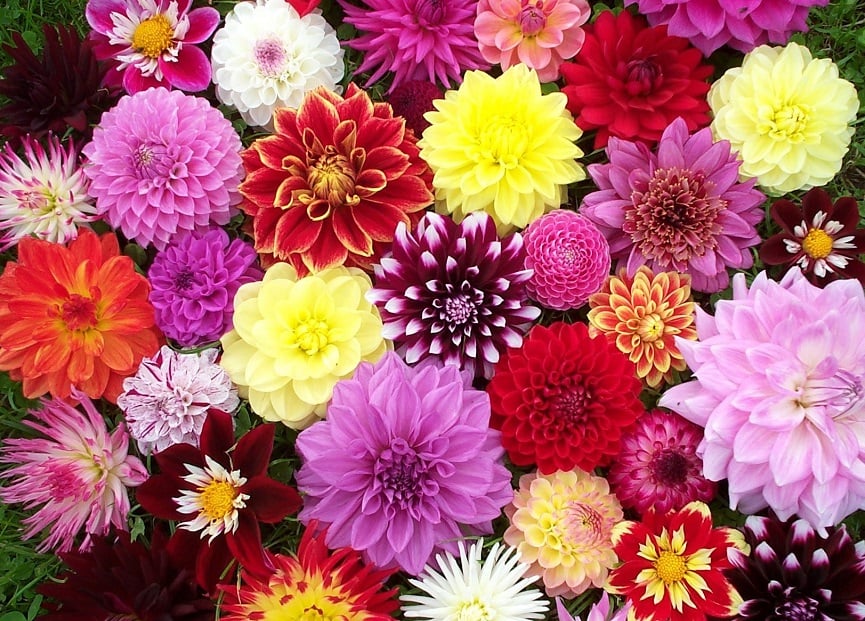
Dahlias have a long flowering season that begins in summer and lasts well into autumn. They are delicate flowers that bloom in various colours. A great addition to any garden, Dahlias prefer moist and well-drained soil. Ensure that the soil is rich in organic matter; dahlias require manure/compost-rich soil.
These beautiful flowers are also a favourite of a lot of pests like, capsids, bugs, caterpillars, slugs, leaf miners, and many more. Watch out for them!
3. Alstroemerias
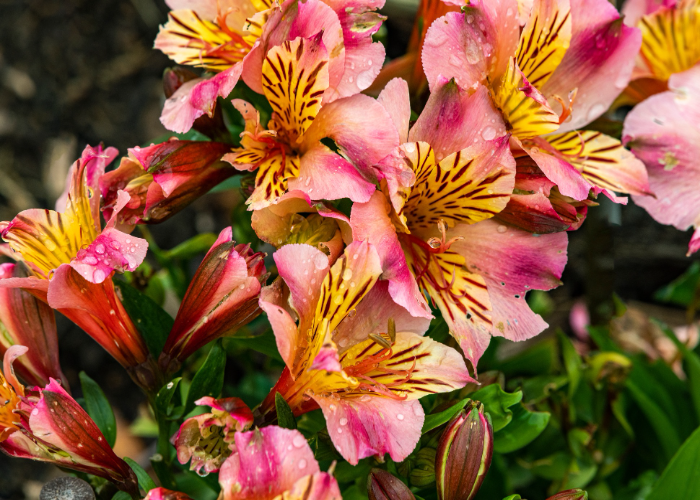
Commonly known as the lily of Incas, these beautiful flowers are native to South America, but they bloom well in UK gardens. These flowers come in diverse colours, from a range of reds to burnt oranges.
These are moderately hardy plants and do require winter mulch to help them bloom properly. If you are growing them in containers, move them away from the frost. With suitable winter care, they will bloom to last and be the grace of your autumn garden.
4. Crocus
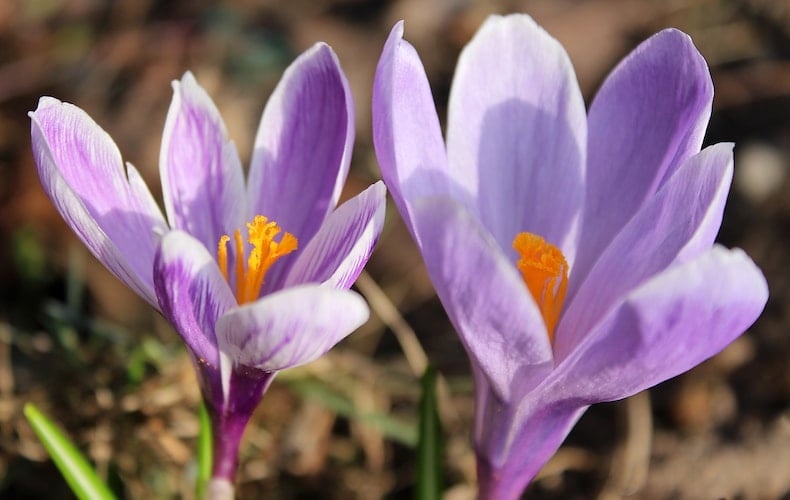
Crocuses come in lavender and purple colours and can grow up to 4 inches in height. These flowers bloom in locations with full sun. However, they can also do well in partial shade.
Crocuses prefer well-drained, organically rich soil with neutral pH.
They bloom around late summer to well into fall. They can easily be naturalized, and you can enjoy them year after year with limited care. Another advantage of planting them is that rabbits, deer, or squirrels hardly bother them.
5. Cyclamen Hederifolium
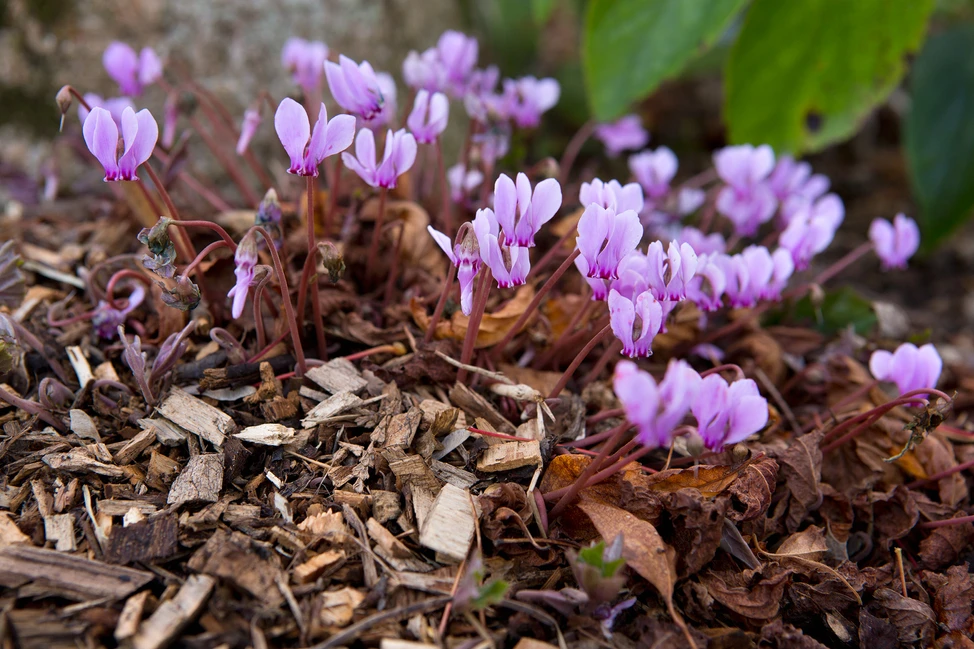
The white and sugar-pink bloom of Cyclamen Hederifolium brightens up the dry areas underneath the trees. These pink autumn flowering bulbs grow well in the shade. These plants are quite hardy and robust and can survive harsh winter weather. They go dormant in summer and must be provided with a little moisture to keep their roots from dying.
Average garden soil suits them. They are easy to grow and can thrive without a lot of care.
6. Guernsey Lily

Native to South Africa, the Guernsey Lily, commonly known as Nerines, flowers at the end of summer. Nerine undulates, one of the species of Nerines, can last up to November. These pink autumn flowering bulbs can grow in containers or the soil in flower beds.
Plant them in spring in free-draining soil.
The bulbs must be planted in a sunny and sheltered spot to protect them from harsh winds.
Once they have flowered, cut them and cover them with a layer of mulch. It will protect the roots from frost, and they won’t die down.
7. Devil Lily
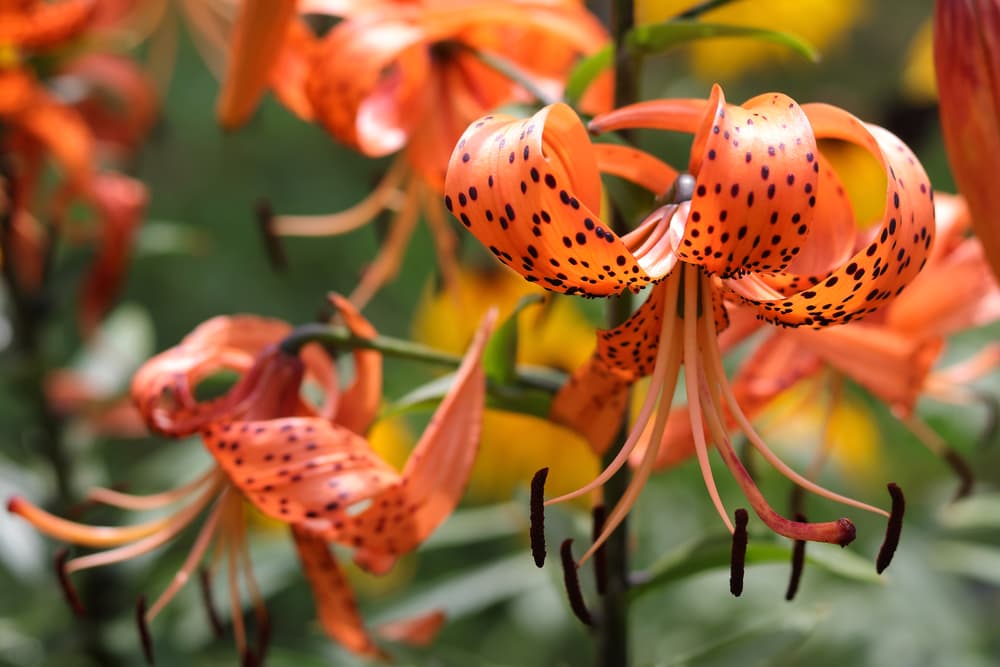
Devil Lily flowers from August to September. These spectacular bulbs are a vision to behold and can grow to 1.2m by 0.3m. This flower is pollinated by bees and is not self-fertile. The flowers are orange and speckled and look regal in your backyard. It will surely draw all the eyes towards itself.
Devil Lily is suited to moist and well-drained soil. It can grow in no shade or partial shade.
It should be kept in mind that devil lily’s pollens are said to be poisonous and can cause drowsiness and vomiting.
8. Begonia
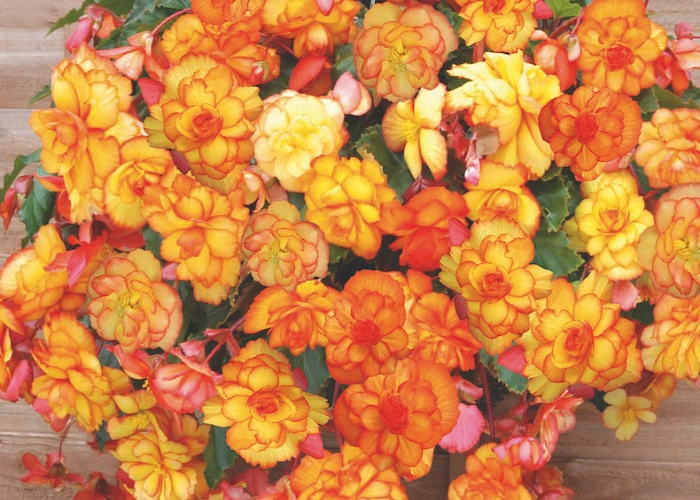
If you want a splash of bright colour beautifying your shaded patios, the Tuberous Begonias are a good choice for it. They flower over an impressively long period of time, from summer to frosty November. A begonia cascading fireball would look great in a window box or hanging pots.
A natural forest understory plant, most kinds of begonias grow well in partial shade.
They prefer moist, well-drained soil with a pH of 5.5 to 6.5.
9. Hesperantha Coccinea ‘Jennifer’
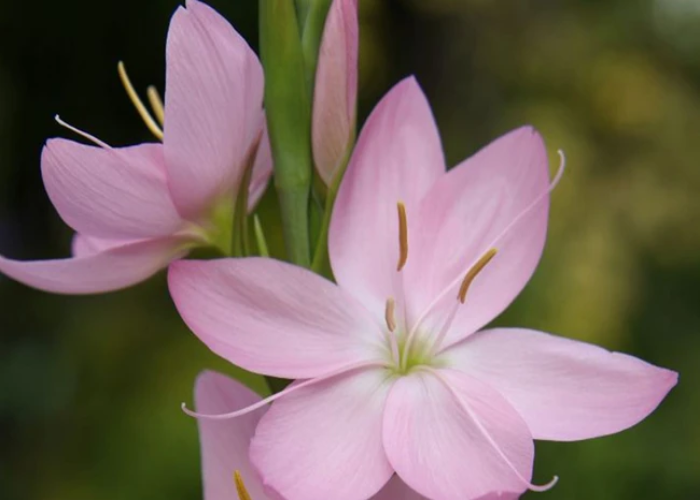
When everything else in the garden dies down, hesperantha coccinea bears pink-red flowers to bring life to your garden. They are ideal for decorations and make great cut flowers for your vase.
A well-drained and moist soil is ideal for their flowering. They prefer full sun and must be sheltered from the dry and cold winds. To make sure their roots don’t die in winter, provide them with organic mulch.
10. Agapanthus
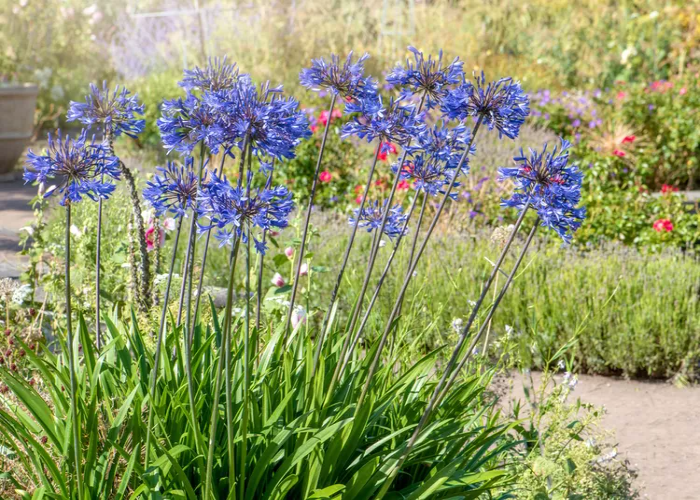
This perennial has flowers atop long stems around 3-4 feet in length, with a generous spread of 2-3 feet. These are suited for well-draining soil. The pH of the soil can range from mildly alkaline to slightly acidic.
You can also grow them as houseplants. They would require average temperatures and should be kept in bright light.
11. Cyclamen
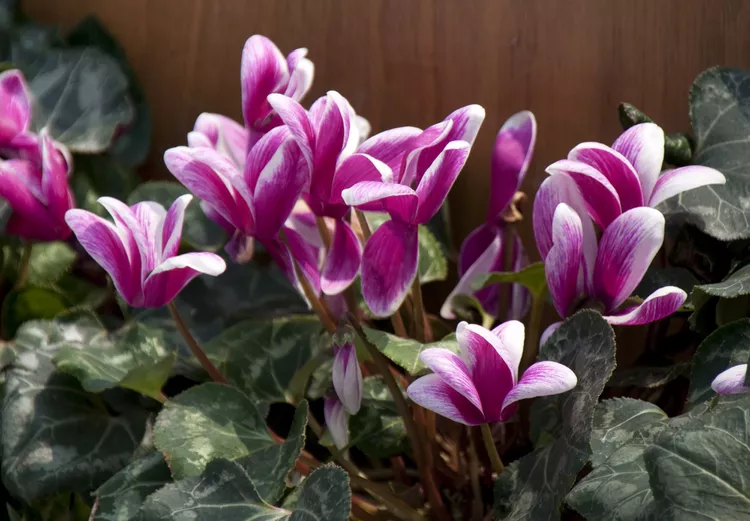
Cyclamens bloom around early fall with white, pink, or purple-pink flowers. There are winter flowering cyclamens, too, that can withstand the cold January weather.
They grow well in partial shade. As long as the soil is not too dry or too sunny, cyclamens can be grown with moderate ease in humus-rich, well-drained soil. Excessive moisture in summer can damage them, so try to avoid it.
Keep them safe from pests like wine weevil and glasshouse red spider mites.
They are prone to fungal diseases like Cyclamen Grey Mould.
12. Late Lucifer (Crocosmia)
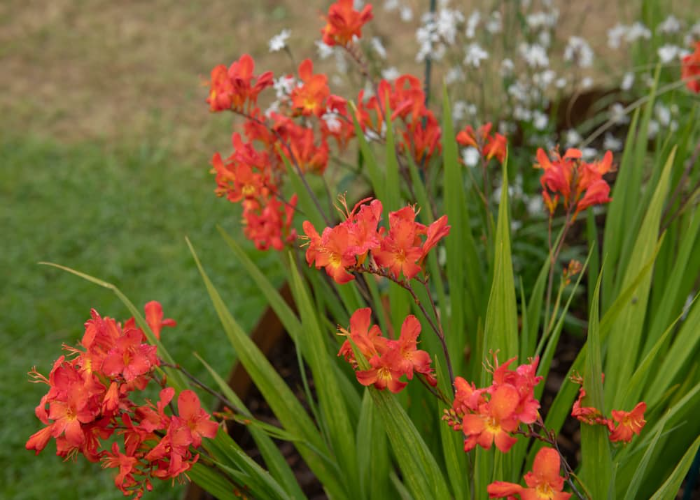
A cormous perennial, Late Lucifer, can grow up to 1m in height. It has deep red spike-like flowers. They require moist, well-drained soil and prefer full sun or partial shade to grow properly.
In colder regions, ensure that they are sheltered from dry and cold winds. They require thick organic mulch in winter to protect their roots and keep them from dying. Divide the clumps in early spring if they become congested.
They are among the variety of plants the gardeners call garden thugs. Late Lucifer needs to be managed well, or there is a chance that they can become a nuisance.
13. Calla Lily
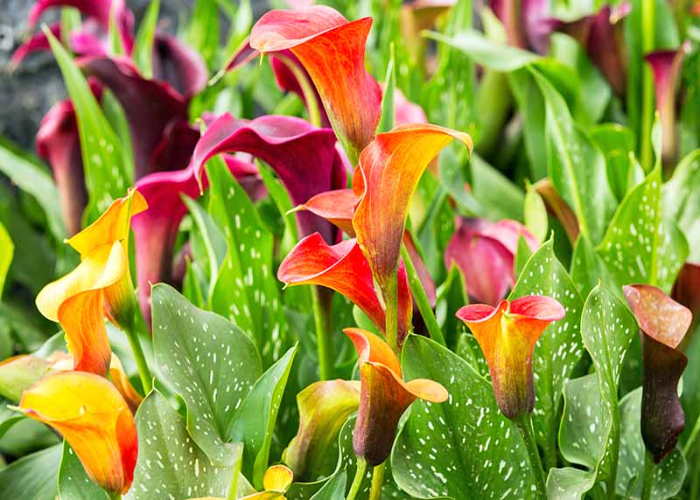
Calla lilies are available in varied colours and are the perfect fix for your waning autumn garden. They grow beautifully in flower beds and borders, or if you wish, you can plant them in containers.
As house plants, take care to place them near sunny windows; they prefer to be in the sun. These plants can tolerate partial shade in warmer climates. They need loose, well-drained soil. Plant them in spring when there is no risk of frost.
14. Chinese Plumbago

Chinese Plumbago is easy to garden and a fairly low -maintenance plant. They tend to knit together and help prevent the loss of water from the soil because of evaporation. They also help in controlling garden weeds.
The beautiful blue colour of the flowers will make for a delightful autumn view. These are especially great plants for pollinators. They make great cut flowers for your vases. A relatively hardy plant, these grow well in full sun or partial shade in well-drained soil.
15. Snowdrop
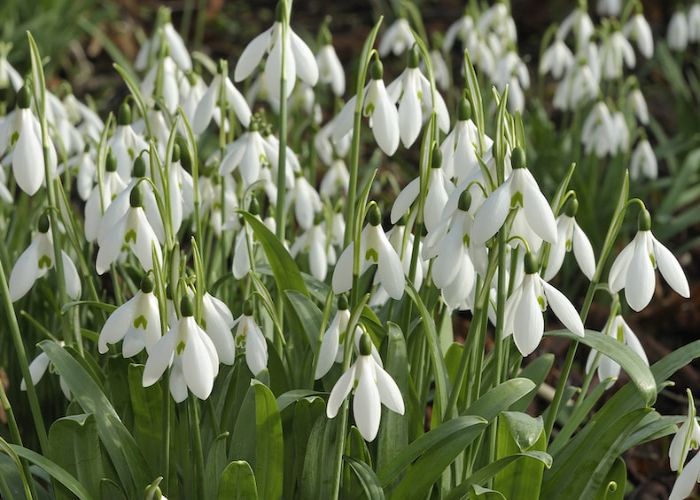
Snowdrops grow in moderate or cold winters; warm winters are not suitable for them. Grow them in moist and well-drained soil, ideally under a tree or a shrub. These winter bulbs prefer shade.
These flowers grow dormant around late spring and will remain underground until the next year. It is important to ensure that you don’t plant anything on the ground, or you will end up accidentally digging your dormant snowdrops.
16. Winter Aconite
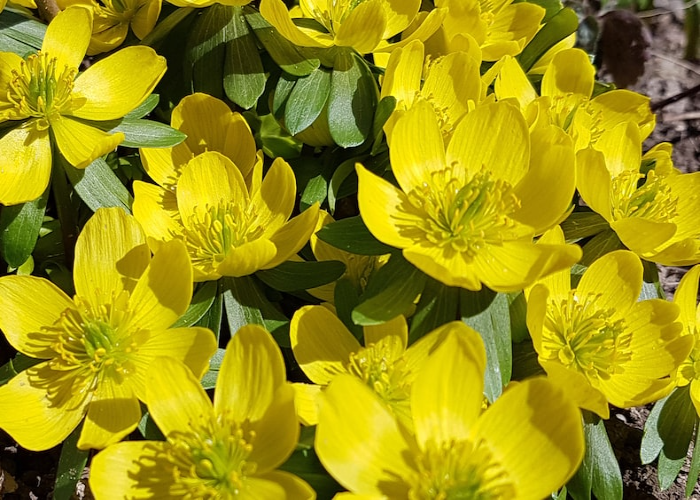
Winter aconites are ideal for underplating amongst the woodland trees. If you want to brighten up the dry patch of land under your trees for the fall, winter aconites are a perfect choice. These beautiful cup-shaped golden flowers surrounded by bright green leaves are a cheerful sight during fall.
These ground-hugging flowers prefer moist soil. If provided with the conditions it prefers, winter aconites can spread readily into large colonies. They can be grown in flower beds, rock gardens, or woodland gardens.
Conclusion
Autumns come with their own palette of colours; while it may seem that the colours of autumn are limited to burnt orange and brown, we have witnessed above that it is not the case. Autumns give us a rich collection of flowers. Pink autumn flowering bulbs like pink cyclamens, bright blue Chinese plumbago, and a variety of colours of dahlias are not lacking against spring flowers.
Most autumn flowers need protection from the cold, dry winds. A rich mulch in winter will ensure they survive dry and cold weather.
Provide the autumn flowering bulbs with the right growing conditions, and your autumn garden will be the envy of others. Bring the flowering charms of autumn to your garden with the flowers listed above.

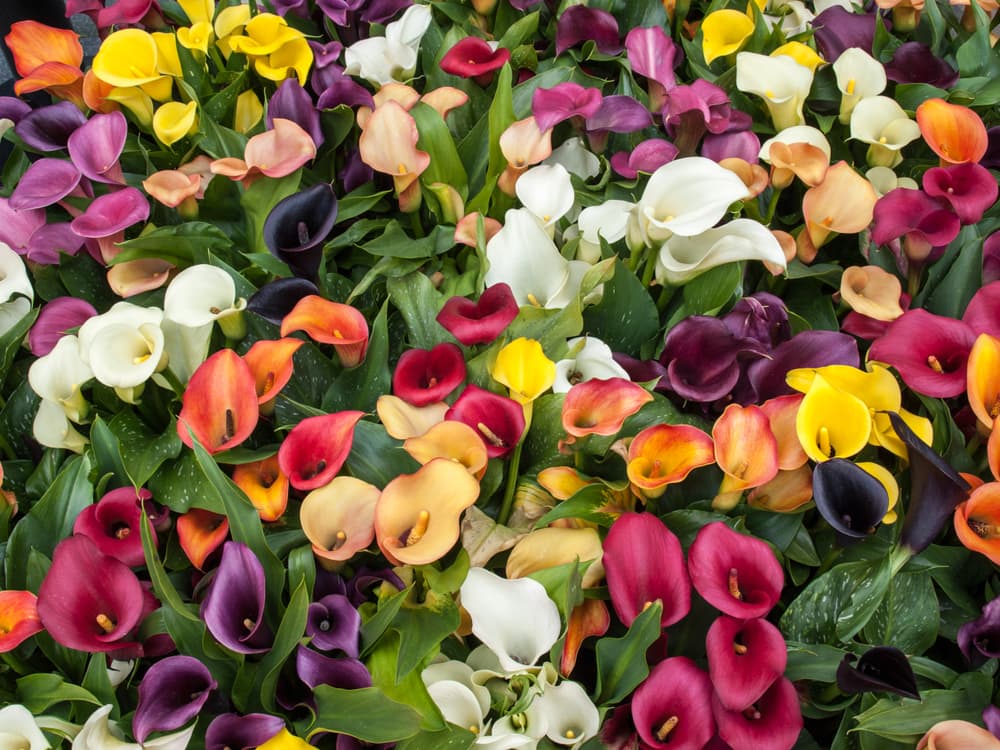
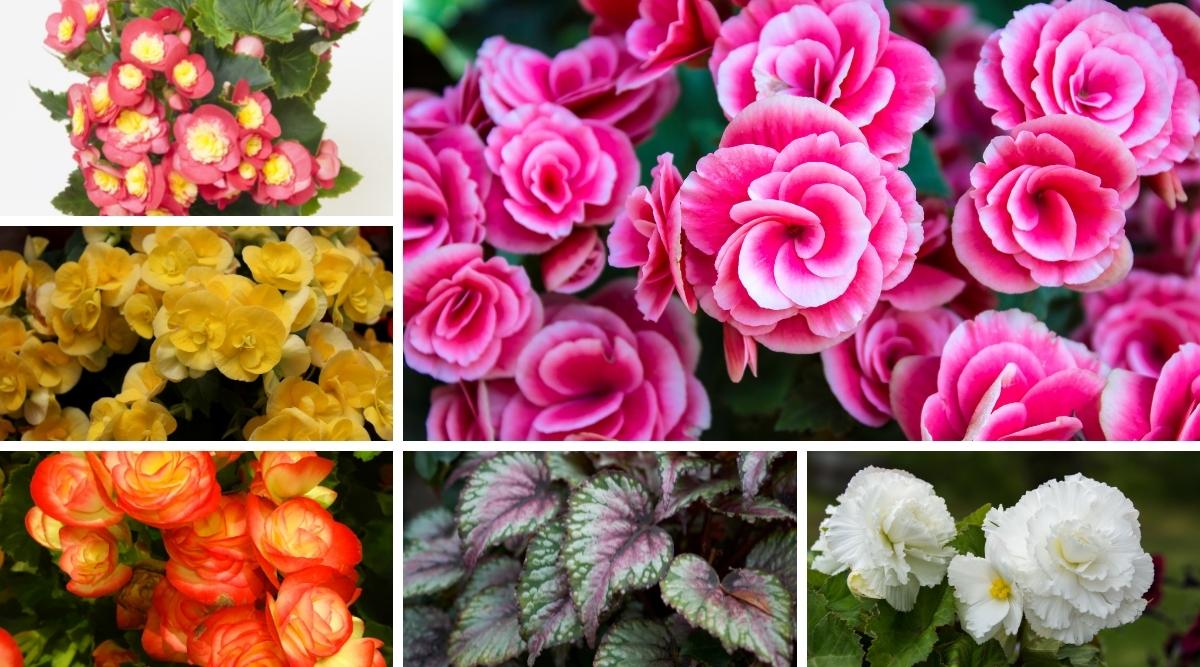
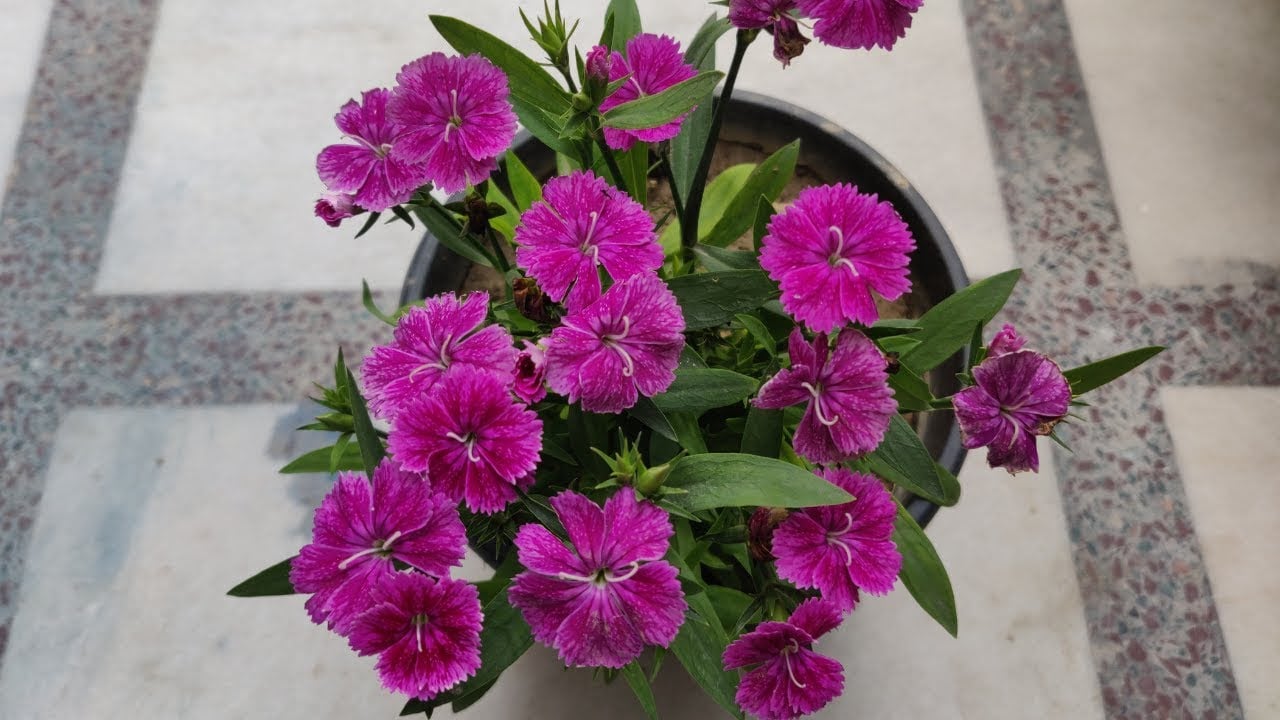
![15 Hardy Evergreen Shrubs that Are Perfect for Pots [UK]](https://staging.thearches.co.uk/wp-content/uploads/Evergreen-Shrubs-That-Are-Perfect-For-Pots.jpeg)
